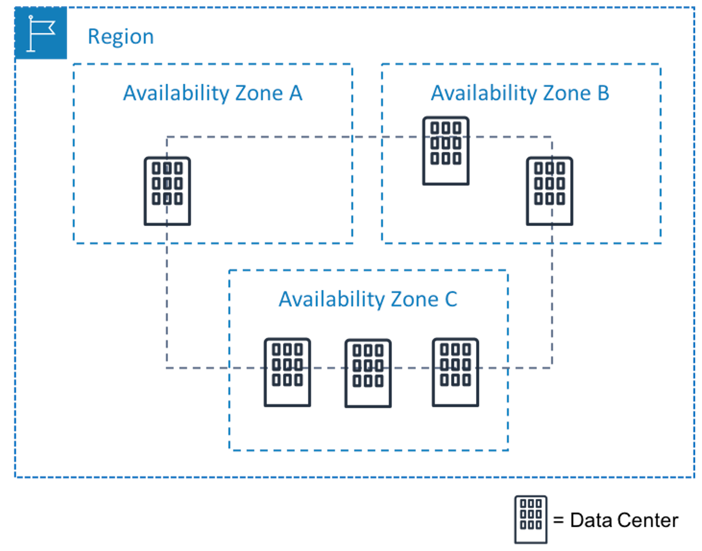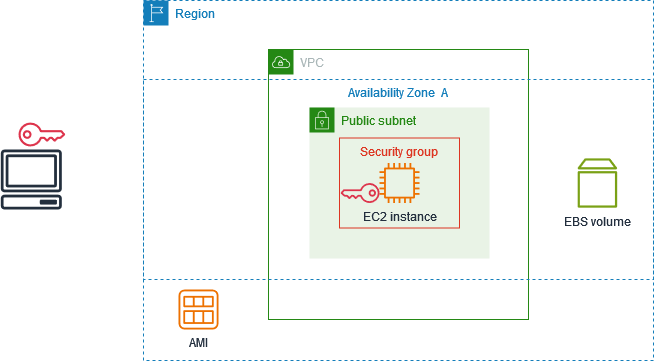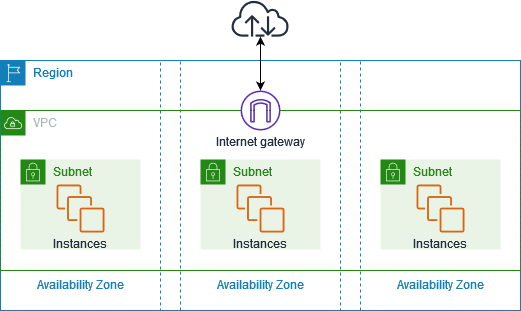#02 [AWS Cloud] - AWS Infrastructure Uncovered: The Backbone of the Cloud!

In this article, we’ll break down AWS infrastructure. First, we’ll take a look at Regions, Availability Zones, and Data Centers. Then, we’ll go over some of the core AWS resources that serve as the foundation for most cloud workloads: EC2 (virtual machines), VPC (networking), and S3 (storage).
AWS infrastructure
If you’ve ever wondered how AWS infrastructure actually works, don’t worry – it’s not as complicated as it sounds! Let’s break it down in a way that makes sense.
Think of AWS as a Giant Toolbox
Imagine you’re building something – let’s say a house. You need different tools: hammers, drills, saws, and so on. AWS is kind of like that, but instead of physical tools, it gives you cloud-based services to build and run websites, apps, databases, and even machine learning models.
AWS Regions, Availability Zones & Edge Locations - What’s the Deal?
Ever wondered how AWS manages to be super fast, reliable, and available all over the world? It all comes down to how AWS infrastructure is set up.
AWS is Everywhere
When you use AWS, your data isn’t stored in some giant, mysterious cloud floating in the sky. Instead, AWS has physical data centers spread across the world. These data centers are grouped into Regions, Availability Zones (AZs), and Edge Locations – each playing a key role in keeping AWS services fast, secure, and always available.
Regions – The Big Picture
A Region is a specific geographical area where AWS has multiple data centers. Think of it like a city with multiple office buildings.




Availability Zones (AZs) – The Backup Plan
A Region isn’t just one building – it has multiple Availability Zones (AZs), which are separate data centers connected with ultra-fast networking.




Edge Locations – Making Everything Faster
While Regions and AZs handle the heavy lifting, Edge Locations make things blazing fast for users across the world.




Data Centers – The Brains of It All
At the core of everything, AWS runs on real, physical data centers filled with thousands of servers, cooling systems, and backup power.




How It All Works Together



This structure ensures that AWS can handle huge amounts of traffic, keep services available 24/7, and recover quickly from failures.

Basic AWS resources & building blocks
Some AWS resources are used all the time, and they also serve as building blocks for other services. For example, RDS (Amazon’s managed database service) is really just a mix of EBS (storage), S3 (backups), and Route 53 (DNS management) under the hood.
We’ll go over these core services briefly for now – just enough to get familiar with them. When we start working with Terraform, I promise we’ll dive deeper into the details.
For now, let’s focus on EC2 (virtual machines), VPC (networking), and S3 (storage) – some of the most essential AWS services. Of course, AWS has tons of other services too. If you’re curious, you can check out the full list here: AWS Documentation.
What is EC2? Your AWS Virtual Machine Playground
Key points
2️⃣ Flexible Pricing – Choose from On-Demand, Reserved, or Spot Instances based on cost and usage needs.
3️⃣ Scalability & Automation – Easily scale up or down with Auto Scaling and integrate with other AWS services.

What is a VPC? Your Private Network in the Cloud
Key points
2️⃣ Full Control Over Networking – You define subnets, IP ranges, security groups, and access rules.
3️⃣ Connect & Secure – Easily connect to the internet, other AWS services, or even your on-premises network using VPNs or Direct Connect.

What is S3? The Infinite Hard Drive of the Cloud
Key points
2️⃣ Flexible & Secure – Set access controls, encryption, and lifecycle policies to manage and protect your data.
3️⃣ Pay-as-You-Go – No upfront cost; you only pay for what you use, making it cost-effective for any workload.

Summary
We’ve explored how AWS infrastructure is built – Regions, Availability Zones, and Data Centers. We also covered some of the core AWS resources like EC2 (virtual machines), VPC (networking), and S3 (storage).
Next up, we’ll create a CLI user, generate Access Keys, and set up the AWS CLI. This setup will be super useful later when we start provisioning AWS infrastructure with Terraform. Stay tuned!